Standard [CURRENT]
ASTM D 6245:2025
Standard Guide on the Relationship of Indoor Carbon Dioxide Concentrations to Indoor Air Quality and Ventilation
- Publication date
- 2025
- Original language
- English
- Pages
- 18
- Publication date
- 2025
- Original language
- English
- Pages
- 18
- DOI
- https://dx.doi.org/10.1520/D6245-25
Product information on this site:
Quick delivery via download or delivery service
Buy securely with a credit card or pay upon receipt of invoice
All transactions are encrypted
Short description
1.1 This guide describes the relationship of indoor carbon dioxide (CO 2 ) concentrations to indoor air quality (IAQ) and building ventilation. 1.2 This guide contains background information on the health, comfort, and performance impacts of indoor CO 2 exposure, as well as indoor CO 2 limits contained in various standards and regulations. 1.3 This guide describes the estimation of CO 2 generation rates from people as a function of sex, age, body mass, and level of physical activity. 1.4 This guide describes the relationship of CO 2 to IAQ, including how CO 2 relates to the perception of human body odor, limitations on the application of CO 2 as a metric of IAQ, and the relationship of CO 2 to the risk of infectious aerosol exposure. 1.5 This guide describes how CO 2 concentration measurements can be used to evaluate building ventilation including mass balance analysis to determine the percent outdoor air intake at an air handler, tracer gas decay measurements to estimate whole building air change rates, and use of the constant injection tracer gas technique at equilibrium to estimate whole building air change rates. 1.6 This guide discusses concentration measurement issues, such as calibration and sensor location, and continuous indoor concentration monitoring but does not include specific test methods for either application. 1.7 This guide discusses the use of indoor CO 2 concentrations for demand control ventilation (DCV) but does not contain detailed application guidance. 1.8 Units- The values stated in SI units are to be regarded as standard. No other units of measurement are included in this standard. 1.9 This standard does not purport to address all of the safety concerns, if any, associated with its use. It is the responsibility of the user of this standard to establish appropriate safety, health, and environmental practices and determine the applicability of regulatory limitations prior to use. 1.10 This international standard was developed in accordance with internationally recognized principles on standardization established in the Decision on Principles for the Development of International Standards, Guides and Recommendations issued by the World Trade Organization Technical Barriers to Trade (TBT) Committee.
ICS
13.040.01
DOI
https://dx.doi.org/10.1520/D6245-25
Also available in
Loading recommended items...
Loading recommended items...
Loading recommended items...
Loading recommended items...

